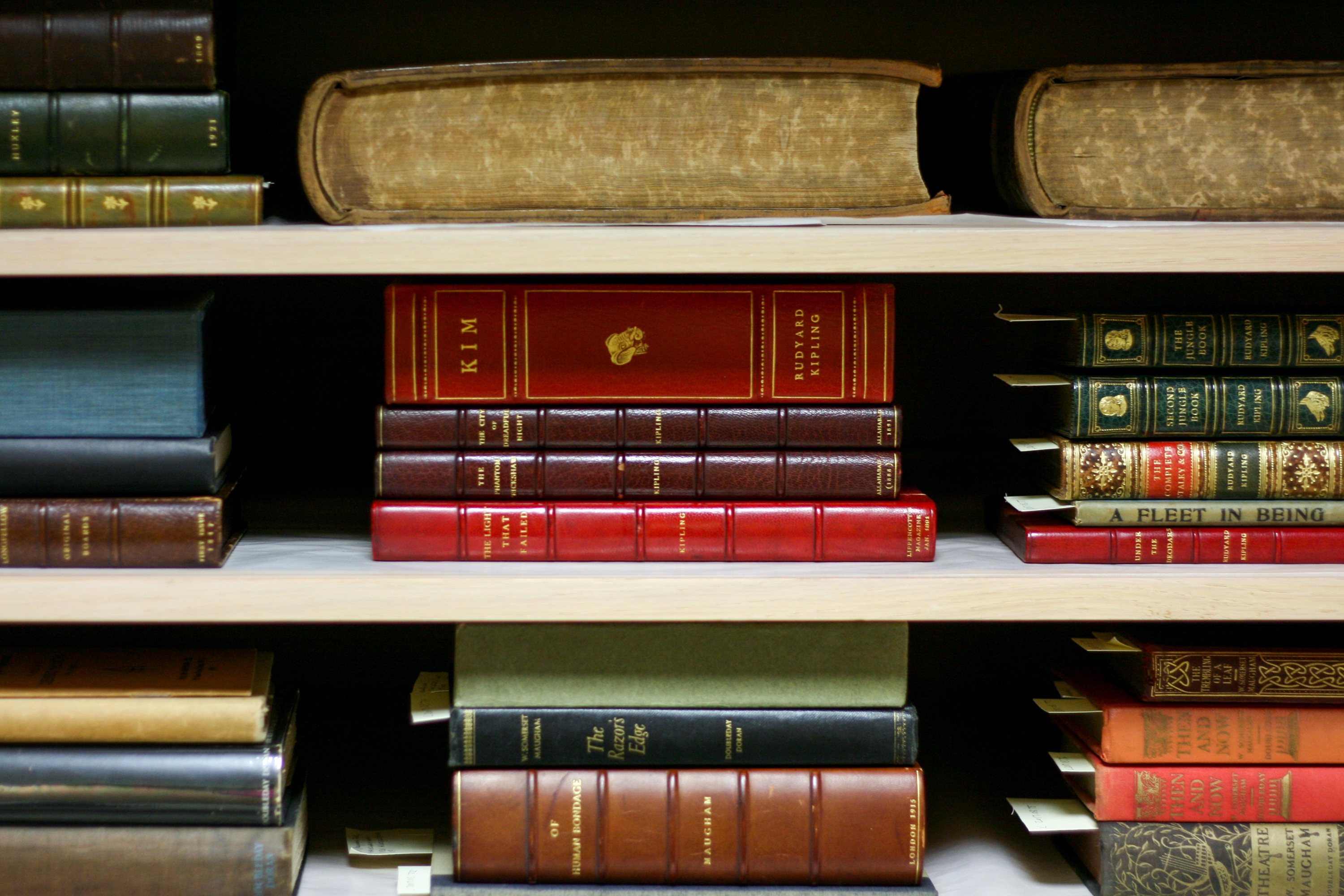Rare collection of bound manuscripts owned by Ann Sullivan Nelson M-D’41 in the Wriston Art Collection.
Photo by Hannah Burgess
Behind the glass doors of Wriston 227 lies a veritable treasure trove of resources for Lawrence University students. The Art Collection, curated by Adjunct Assistant Professor of Art History, Curator of the Wriston Art Center Galleries and Museum Studies Interdisciplinary Beth Zinsli, contains art, manuscripts, coins and a variety of artifacts from around the world which spans several centuries. Students can book individual appointments with specific artifacts, or experience the collection through a class in which the professor arranges a visit. “At a minimum, I hope [the students] get just a little bit of pleasure out of seeing something beautiful or interesting, or learning a little bit of something new,” Zinsli stated.
While it is fascinating to simply be able to behold and even carefully handle these artifacts, the Art Collection is also dedicated to providing students with a means of conducting real research. In many art classes, the artifacts can also serve as inspiration and guidance. “I have used the collection in Ceramics to have students come up and touch pieces that were made thousands of years ago to give the idea of the continuity of ceramics, and also to appreciate the level of skill that went into the work that was made,” explained Visiting Assistant Professor of Art History Alice Sullivan. She also mentioned that the Art Collection is often a destination for the Introduction to Studio Art classes. She said, “I want [students] to know that the resource is available since that’s a class that often has non-majors in it.” Indeed, while the Art Collection has clearly applicable use for art classes, the resources can be and are used for a wide variety of courses.
“Art can contextualize,” Sullivan mused, and the many classes which utilize the Wriston Collection outside of the Art or Art History departments are a testament to the ways in which the art collection can enrich learning experiences. “We’ve actually had a striking number of classes from departments outside of Wriston coming to the collections in the past couple years” commented Zinsli, citing examples of history, English, religious studies and even chemistry classes which have used the collections for past projects. Associate Professor of English Garth Bond spoke to the uses of such a resource for his own History of the Book class: “One of the things that students do is they work hands on with rare books, and so having the Nelson collection has been amazing because it’s such a great collection of rare books… they’re really lovely and important books, and it gives students an opportunity to think about these books as material objects in a way that it’s hard to do if you don’t have a major collection.”
Overall, the professors were in agreement that the Art Collection can be a formative resource for student research experience. Bond noted, “There are lots of opportunities, and it’s really exciting because this collection is really here so that students can research. It’s an opportunity for senior experiences [and] for independent studies.” Zinsli provided anecdotes of such projects, mentioning, “Some students have been working with independent studies figuring out what the pigments in manuscripts are made from,” among many others.
While many classes have made trips to the Art Collection, students are also able and encouraged to make use of the collection on their own time. To see what is available, students may go online to http://www.sscommons.org and search “Wriston” to view the artifacts stored in the collections. Once deciding on any artifact(s), Zinsli may be contacted by email to set up a viewing appointment. Students may also contact Zinsli for initial assistance in deciding what to examine. “I can help them figure out what kinds of things we have and send them a list [so that] they can come in and look at them,” she explained, also mentioning that though the collection room is open 8 a.m. to 5 p.m. Monday through Friday, students should arrange viewing appointments beforehand so that any desired artifacts can be made ready for examination.
Lawrence University’s Art Collection is a key component to engaged learning. Indeed, Zinsli described the collection as “dedicated to the educational mission of the university.” Lawrence students have this resource at their disposal for interdisciplinary projects, classes and much more. “Everything in the collection is intended to be used by students for research, for enjoyment, [and] to learn about new cultures and time periods,” add Zinsli. She also touched on the potential for such research to have a lasting impact.
“Students could do original research on objects in the collection or a senior capstone or for honors projects, which has happened in the past. They could take that research into graduate school or into work in another field afterwards, and that would be really cool.” Whatever a student’s major or areas of interest, the Art Collection is a resource available for expanding knowledge or conducting research in many fields.

